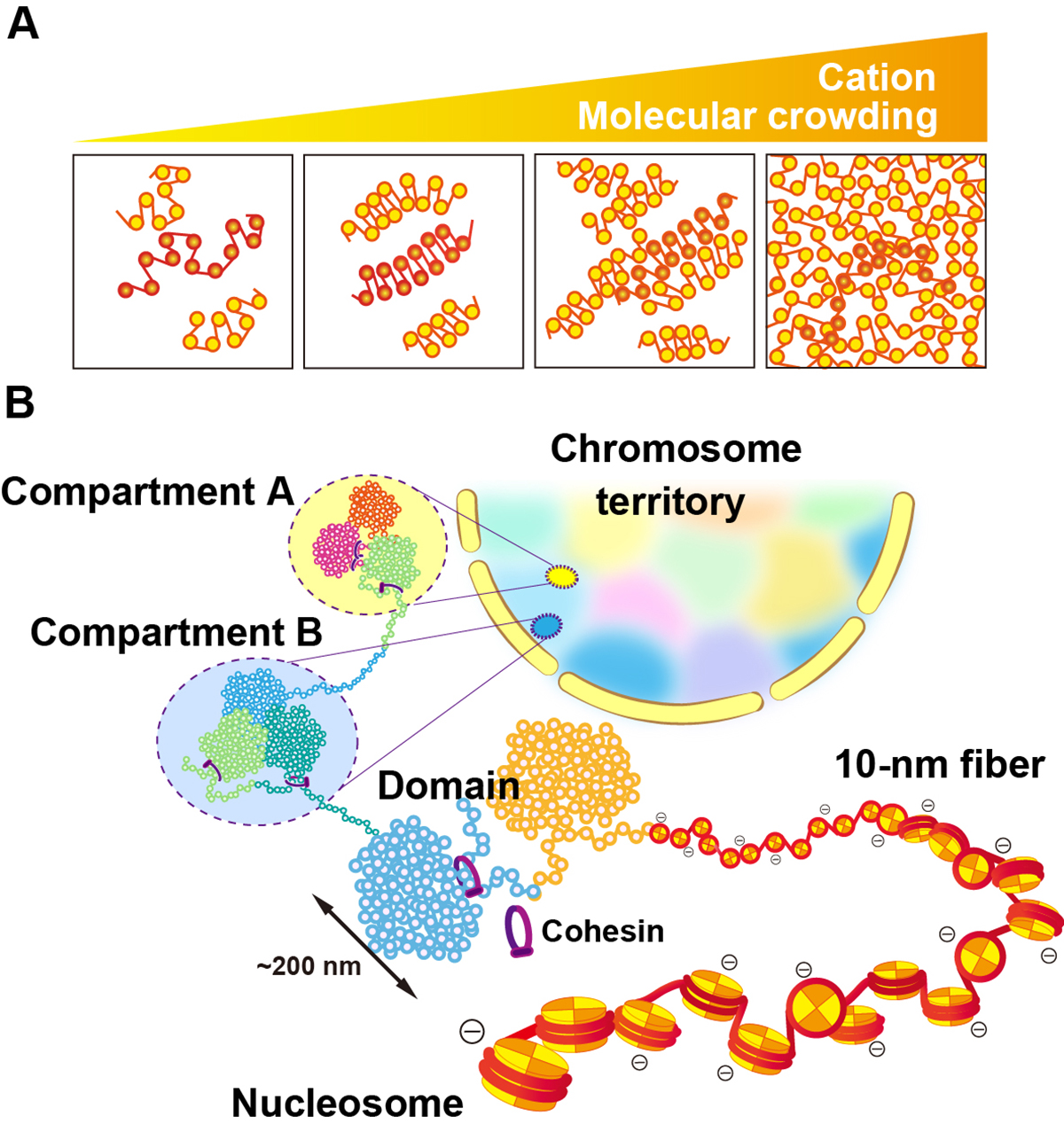Physical nature of chromatin in the nucleus
Physical nature of chromatin in the nucleus
Kazuhiro Maeshima, Shiori Iida, and Sachiko Tamura
Cold Spring Harbor Perspectives in Biology The Nucleus (2nd edition) 13, a040675 (2021) DOI:10.1101/cshperspect.a040675
The full text of the article is here.
Genomic information is encoded on long strands of DNA, which are folded into chromatin and stored in a tiny nucleus. Nuclear chromatin is a negatively charged polymer composed of DNA, histones, and various nonhistone proteins. Because of its highly charged nature, chromatin structure varies greatly depending on the surrounding environment (e.g., cations, molecular crowding, etc.). New technologies to capture chromatin in living cells have been developed over the past ten years. Our view on chromatin organization has drastically shifted from a regular and static one to a more variable and dynamic one. Chromatin forms numerous compact dynamic domains that act as functional units of the genome in higher eukaryotic cells and locally appears liquid-like. Chromatin dynamics can be modulated by several physical or geometrical factors in the cell including cations, chromatin proteins, and transcription machinery. This dynamic behavior can govern various genome functions by changing DNA accessibility. Based on new evidences from versatile genomics and advanced imaging studies, we discuss the physical nature of chromatin in the crowded nuclear environment and how it is regulated. This review article was published in Cold Spring Harbor Perspectives in Biology, also as a chapter of “The Nucleus (2nd edition)”.
This work was supported by JSPS and MEXT KAKENHI grants (20H05936), a Japan Science and Technology Agency CREST grant (JPMJCR15G2), the Takeda Science Foundation, and the Uehara Memorial Foundation.

Figure: (A) Polymer melt model. Under physiological cation and/or molecular crowding conditions, inter-fiber nucleosomal contacts in the fibers increase and lead to a melted polymer-like or “sea of nucleosomes” state. (B) A simplified scheme for hierarchical chromatin organization in the nucleus: Nucleosome, the 10-nm fiber, chromatin domains, chromatin compartments and interphase chromosome occupied in a chromosome territory (highlighted as different colors).















